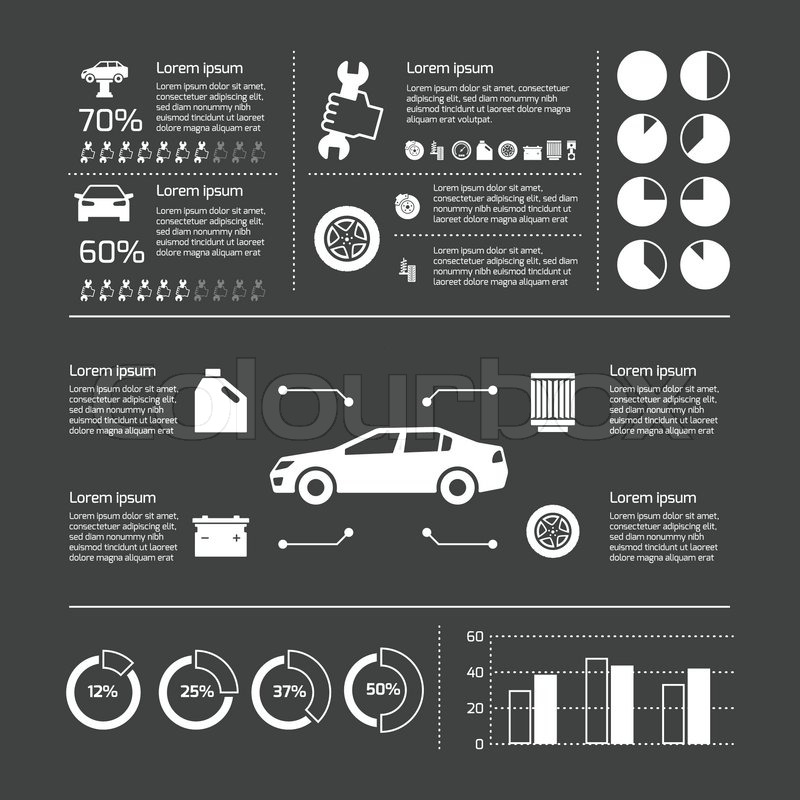Translating Your Vehicle'S Caution Indicators: What They Really Represent
Translating Your Vehicle'S Caution Indicators: What They Really Represent
Blog Article
Created By-Samuelsen Forbes
When you lag the wheel, those glowing caution lights on your control panel can be a bit bewildering. Do simply click the up coming web site know what they're attempting to tell you about your automobile's health and wellness? Recognizing the relevance of these lights is essential for your safety and the longevity of your automobile. So, the next time among those lights appears, wouldn't you intend to decipher its message accurately and take the necessary actions to address it?
Common Warning Lights and Interpretations
Determine typical warning lights in your cars and truck and understand their definitions to ensure secure driving.
One of the most typical caution lights consist of the check engine light, which indicates issues with the engine or exhausts system. If this light comes on, it's essential to have your car inspected promptly.
The oil stress advising light shows reduced oil pressure, requiring prompt focus to avoid engine damages.
A flashing battery light might recommend a defective billing system, possibly leaving you stranded if not resolved.
The tire pressure monitoring system (TPMS) light informs you to low tire pressure, impacting automobile security and fuel efficiency. Neglecting this might lead to harmful driving conditions.
The abdominal muscle light suggests a problem with the anti-lock braking system, endangering your capability to quit rapidly in emergencies.
Last but not least, the coolant temperature cautioning light warns of engine getting too hot, which can result in serious damages if not dealt with swiftly.
Understanding these common warning lights will assist you address concerns promptly and maintain safe driving conditions.
Significance of Prompt Focus
Recognizing the usual warning lights in your car is only the primary step; the relevance of without delay attending to these warnings can not be emphasized enough to guarantee your safety and security when driving.
When a caution light illuminates on your dashboard, it's your auto's means of connecting a possible concern that requires focus. Overlooking these cautions can cause extra severe troubles later on, compromising your safety and potentially costing you more in repairs.
Motivate interest to alerting lights can protect against malfunctions and mishaps. For instance, a blinking check engine light could suggest a misfire that, if left unattended, might create damage to the catalytic converter. Resolving this immediately can conserve you from an expensive repair work.
Similarly, a brake system cautioning light might indicate reduced brake liquid or used brake pads, essential components for your safety and security when driving.
DIY Troubleshooting Tips
If you observe a caution light on your dashboard, there are a couple of do it yourself fixing pointers you can attempt prior to seeking expert assistance.
carcleanernz is to consult your car's guidebook to comprehend what the certain warning light suggests. Sometimes the concern can be as basic as a loosened gas cap setting off the check engine light. Tightening the gas cap might settle the trouble.
Another common problem is a reduced battery, which can cause various advising lights. Inspecting cargroomingnz for deterioration and ensuring they're protected could take care of the trouble.
If a caution light lingers, you can attempt resetting it by detaching the cars and truck's battery for a few mins and then reconnecting it. Furthermore, inspecting your vehicle's fluid degrees, such as oil, coolant, and brake liquid, can help repair cautioning lights associated with these systems.
Verdict
Finally, recognizing your cars and truck's warning lights is necessary for maintaining your vehicle running efficiently and securely. By quickly addressing these notifies and understanding what they suggest, you can avoid pricey repair services and potential malfunctions.
Remember to consult your vehicle's handbook for particular details on each cautioning light and do something about it appropriately to guarantee a hassle-free driving experience.
Remain educated, stay risk-free when traveling!
